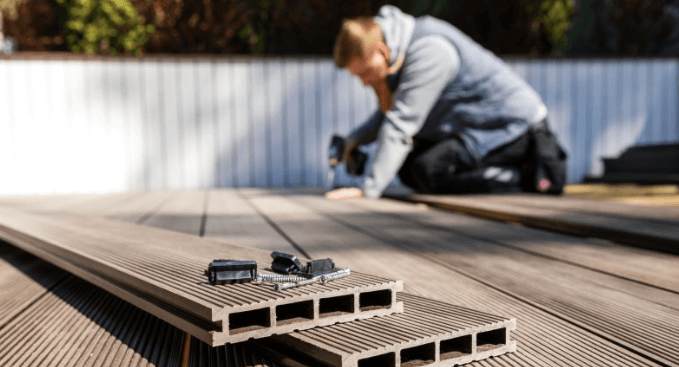Why WPC Composite Decking Is the Best Choice for Your Home’s Outdoor Space
Introduction: The Benefits of Modern Decking Materials
When it comes to outdoor living, a deck is often the centerpiece of the space. It serves as a platform for everything from relaxation to entertaining guests. As technology advances and materials evolve, WPC composite decking has emerged as a leading option for homeowners. Known for its strength, low maintenance, and environmental benefits, WPC composite decking is quickly replacing traditional wood in decking projects. This article explores the reasons behind its rising popularity and why it may be the perfect solution for your next outdoor project.
What Makes WPC Decking Stand Out from Other Materials?
Unlike traditional wood, which requires frequent maintenance and is vulnerable to environmental damage, WPC decking is designed to stand the test of time. It combines wood fibers and plastic, resulting in a material that offers the look and feel of natural wood without the drawbacks:
- Longer Lifespan: WPC decking can last up to 30 years or more with minimal maintenance, whereas wood decks may need to be replaced every 10 to 15 years.
- Resistance to the Elements: The plastic content of WPC decking ensures that it is resistant to mold, mildew, and rot, making it ideal for humid or wet climates.
The Environmental Advantages of WPC Decking
As environmental concerns grow, many homeowners are looking for sustainable materials for their home improvement projects. WPC decking is an environmentally friendly option that reduces the need for timber, helping preserve forests and ecosystems. Leading composite decking manufacturers produce WPC decking made from recycled materials, ensuring that it’s both eco-friendly and durable.
- Made from Recycled Materials: WPC decking is made from recycled wood fibers and plastic, reducing waste and minimizing the environmental impact of decking production.
- 100% Recyclable: When WPC decking reaches the end of its life, it can be fully recycled, preventing it from contributing to landfill waste.
- Cost-Effective and Low Maintenance
While the initial cost of WPC decking may be higher than that of wood, the long-term savings in maintenance costs make it a more economical option in the long run.
- No Need for Regular Treatment: WPC decking does not require sanding, staining, or sealing like traditional wood decking. A simple wash with soap and water is all it takes to maintain its appearance.
- Reduced Repair Costs: WPC decking’s durability means that it is less likely to crack, splinter, or require frequent repairs, saving homeowners money over time.
Aesthetic Flexibility for Every Style
WPC composite decking is available in a wide range of colors and finishes to match any design preference. Whether you’re going for a classic wood look or a more modern style, WPC decking provides the versatility needed to create a customized outdoor space.
- Variety of Colors and Textures: Choose from a range of colors, from rich browns and grays to lighter hues, along with finishes that mimic natural wood grain.
- Modern and Sleek Designs: WPC decking can also be produced in solid colors or with sleek, contemporary textures for a more modern aesthetic.
Conclusion: The Smart Choice for Homeowners
When it comes to decking, WPC composite material offers unbeatable performance, durability, and sustainability. With its long lifespan, low-maintenance needs, and wide range of design options, WPC decking is the ideal choice for homeowners who want to create an outdoor space that is as functional as it is beautiful. Leading composite decking manufacturers offer innovative solutions to meet the needs of every homeowner, ensuring you get the best in both quality and design.
FAQs about WPC Composite Decking
1. What is WPC composite decking?
WPC (Wood Plastic Composite) decking is made from a blend of recycled wood fibers and plastic. It offers the appearance of natural wood while providing enhanced durability, low maintenance, and resistance to environmental factors like moisture, mold, and mildew.
2. How long does WPC decking last?
WPC decking can last up to 30 years or more, with minimal maintenance. Its durability is far superior to traditional wood decking, which may need to be replaced every 10 to 15 years.
3. Is WPC decking environmentally friendly?
Yes, WPC decking is made from recycled wood fibers and plastic, reducing the need for timber and helping preserve forests. It is also 100% recyclable, making it a sustainable choice for homeowners.
4. Do I need to maintain WPC decking like traditional wood decking?
No, WPC decking is low maintenance. Unlike wood, it does not require sanding, staining, or sealing. A simple wash with soap and water is sufficient to maintain its appearance.
5. Can WPC decking be used in all climates?
Yes, WPC decking is resistant to mold, mildew, and rot, making it ideal for all climates, including humid and wet environments. Its plastic content helps it withstand harsh weather conditions.
6. Is WPC decking more expensive than wood decking?
While the initial cost of WPC decking may be higher than wood, the long-term savings in maintenance and repair costs make it a more economical choice over time.
